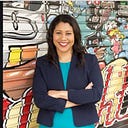280 New Navigation Center Beds and Continuing our Progress on Homelessness
Since taking office, I have made it clear that my top priority is helping our homeless residents get off the streets and into care and shelter. While we have made progress, with thousands of people sleeping on our streets every night, there is much more work to be done.
I am committed to opening 1,000 new shelter beds by 2020, the largest shelter increase in San Francisco in 30 years. I am proposing a 200-bed SAFE Navigation Center to be located at Sea Lot 330 on the Embarcadero, and today I am announcing we will add 80 new beds at the existing Division Circle and Civic Center Navigation Centers, which will open this summer.
That’s 280 more places for people to go at night. 280 more places for people to get connected to services and housing. 280 more opportunities to help people exit homelessness.
In addition to adding these beds, we are still working every day to help those on our streets. We are proactively reaching out to our homeless population with offers of shelter and services to bring people indoors instead of living in tent encampments. We are expanding treatment for people suffering from behavioral health and substance use issues on our streets, and investing in rapid rehousing and eviction prevention program to prevent people from falling into homelessness in the first place. And to ensure that we are using our limited resources effectively, we are using one centralized database, known as the ONE system, to track the progress we are making on a case-by-case basis to get people the help they need.
Here is what we have done so far since I took office last July:
- Through the work of our Department of Homelessness and Supportive Housing, we’ve helped 1073 people exit homelessness, through placing them in permanent supportive housing, reuniting them with family through our Homeward Bound Program, and providing rapid re-housing subsidies to get them into stable housing.
- Opened three new Navigation Centers, with a total of 338 new beds.
- Recorded more than 4,710 individual assessments and 925 family assessments of homeless residents in the ONE System in order to better track outcomes and better utilize resources in the future.
- Through the collaborative work of our Healthy Streets Operations Center, Homeless Outreach Team, and Encampment Resolution Team, we have resolved 17 tent and vehicle encampments and helped 136 people previously living in these encampments enter Navigation Centers.
- 65% of people in resolved encampments were connected with shelter or Navigation Center placements.
- Reduced the total number of tents citywide by 40%
- Reduced encampments with 6+ tents by 65%
- Conducted monthly health fairs to serve homeless individuals, with a total of: 281 medical engagements, 353 HIV tests, 167 Narcan Trainings/Overdose Prevention Education sessions, and 29 Shelter and Navigation Placements.
- Conducted street behavioral health and substance use treatment outreach efforts, resulting in 700 contacts with individuals on the street. 78 people were referred to treatment through these programs.
- Funded Right to Tenant Counsel, a first of its kind program in California to provide residential tenants facing eviction with legal representation in order to reduce evictions.
Here is how we will continue this progress:
- We need more shelter so that everyone on our nightly waitlist has a place to stay. By the end of 2020, we will open 1,000 new shelter beds, including the 280 beds mentioned above.
- In order to build these shelters faster, I have introduced a Shelter Crisis Ordinance, which would allow us to cut months in bureaucratic delays that hold up new shelter proposals. This legislation has passed the Building Inspection Commission and Planning Commission and is pending at the Board of Supervisors.
- Too many people are suffering from severe behavioral health and substance use issues on our streets, which puts a strain on our hospitals and our criminal justice system instead of treating the root cause. I’m working with Supervisors Rafael Mandelman and Senator Scott Wiener on implementing conservatorship legislation in San Francisco so we can help those who are clearly in need.
- In order to make sure we have the resources to support our conservatorship program, I announced we would open an additional 100 mental health and substance use beds, 14 of which are open. The remaining 86 will open this year.
- Our Rising Up Campaign will help cut youth homelessness in half by 2023 by serving 500 Transitional Age Youth (TAY) who are experiencing homelessness, as well as preventing homelessness for another 450 at-risk TAY.
- Our windfall Educational Reserve Augmentation Fund includes my plans to support the shelter beds and mental health beds above, as well as funding for 300 more units of permanent supportive housing that we can open this year, and construction of new affordable housing, including 255 units for homeless people at 1060 Mission Street. The funding will also help fund our small sites program, which preserves vulnerable affordable housing so people don’t get evicted.
We have so much work to do to meet the challenges of people living on our streets. But every day we are out there doing the work, finding solutions not only to help those living on our streets, but to prevent more people from ending up there in the future.
